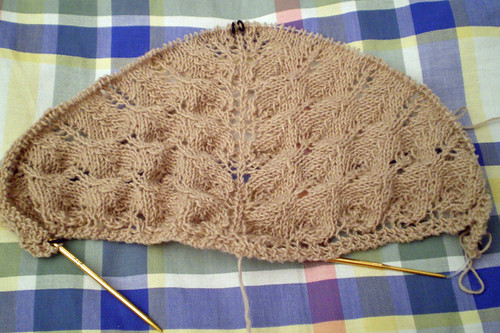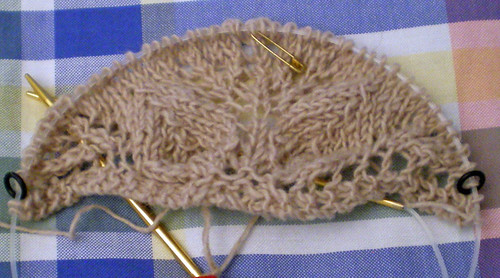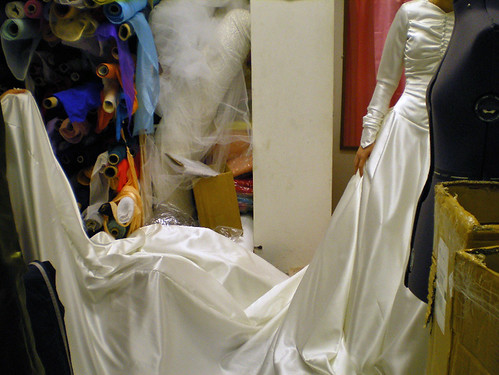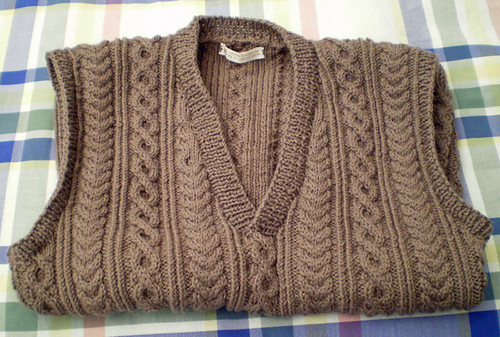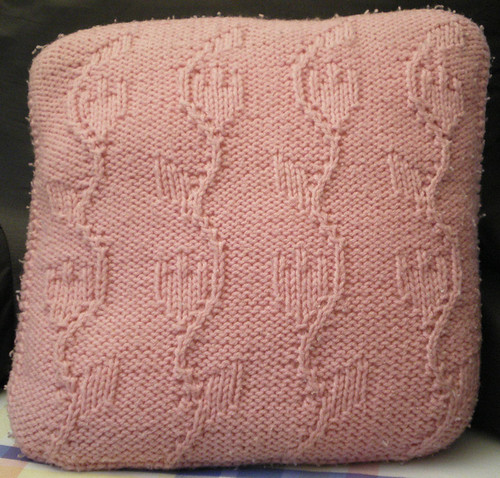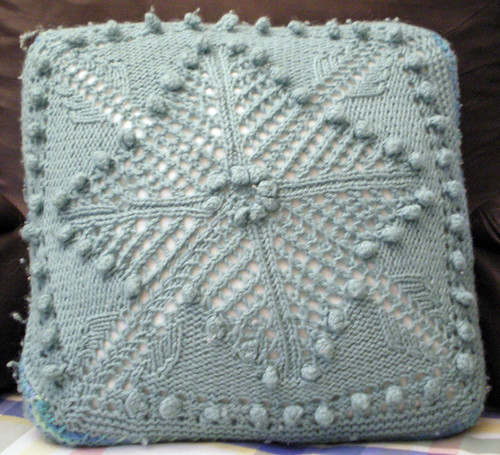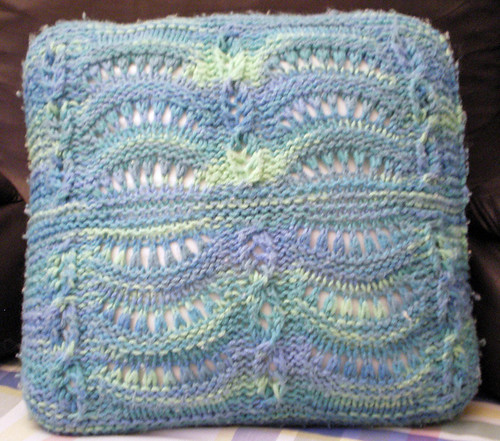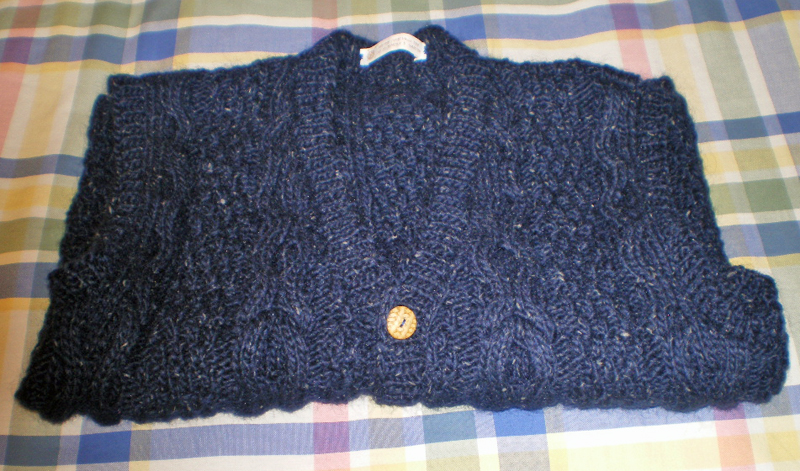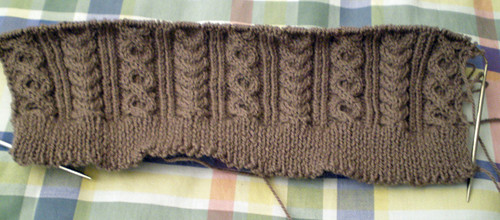Finishing a (Martin) Storey
Last night was devoted to finishing the Martin Storey Milkshake pattern I adapted for a dressy top in Filatura di Crosa Sera. While working the first sleeve on Sunday, I noted that the sleeve cap shaping did not match the armhole. Indeed, the series of decreases in the sleeve cap was more like raglan sleeves than set-in sleeves, though the sleeve ended with a wider top than a raglan sleeve does. I was concerned. I crudely pinned the finished sleeve to the body (after sewing the cotton shoulders together) to see if the sleeve will fit or not; I had thought the cap would be too narrow and too short. Roughly pinned, the sleeve fit: no missing inches in either direction. After breathing a sigh of relief, I began sleeve #2 and worked until the armhole decreases. Last night I had a large block of unclaimed time (rare these days, with D#1's wedding looming in the near future), so finishing the sleeve and seaming the sweater went on the agenda. And here's the finished product: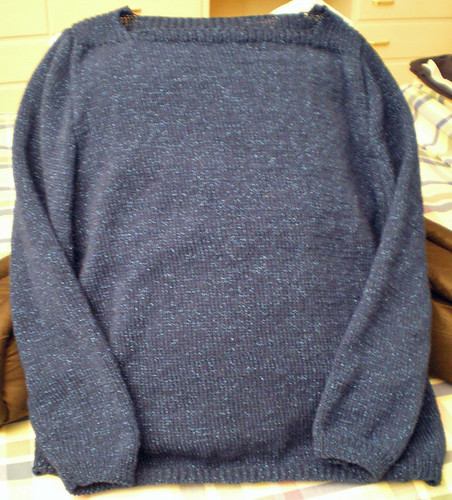
The fit, she is parfaite!
I have only to attach one of my labels and decide if I need to do a row of crochet around the neckline. With weddings coming up on the 14th and 21st, I plan to wear this with a long navy slinky skirt, navy peau de soie shoes, and a navy bag with rhinestone clasp. Update: I did a row of single crochet around the neckline for a neater finish.
Final thoughts on this pattern: it was a quick knit even on size 6 needles; using locking markers every 10 selvedge loops helped keep things even. But I truly disliked the way the instructions were written; must be a Martin Storey thing, since I had no problems knitting Rowan patterns by Kim Hargreaves that were much more intricate. I've admired photos of current Storey designs for a while now but hadn't read any directions. In my opinion, they could be written a lot more clearly. And the schematics aren't helpful because they are just sketches of the item, not real schematics. I hate that. I rely on schematics to see the dimensions of all parts of the item. Bleah on Rowan for that!
Today when I pulled my one and only long-sleeved ivory sweater (commercially-made, 100% cotton, mock turtle neck) out of the drawer I noticed the stitches around the neck are dissolving from years of wash and wear. Oh joy! An excuse to go yarn shopping (as if I needed one) to make a replacement ivory sweater. Even DH said when I showed him the dissolved stitches that anything I make, he knows I can repair. He ought to know; just look at his vest wardrobe now. Readers, suggest a soft ivory yarn for me in sport or DK weight. Fiber should be a cotton blend. I'd like to hear about cotton yarns you love.





